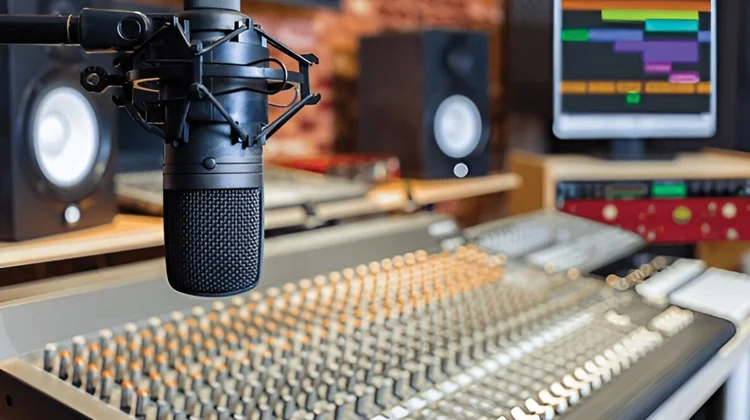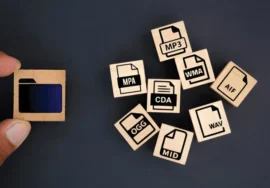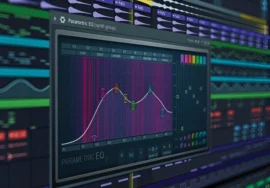
A Beginner’s Guide
Audio editing is a skill that has become important in today’s digital age. Whether you’re a musician, podcaster, or content creator, having a good understanding of audio editing tools can help you produce high-quality audio content.
In this guide, we’ll give you a comprehensive overview of the most popular audio editing tools available. We’ll also discuss the basic audio editing techniques you can use to improve your audio quality.
Choosing the Right Audio Editing Tool
There are many audio editing tools available, each with its own unique features and benefits. When choosing an audio editing tool, it’s important to consider your specific needs and budget.
Here are the key factors to consider when choosing an audio editing tool:
- Features: What features do you need in an audio editing tool? The tools are better suited for basic editing tasks, while others offer more advanced features for professionals.
- Ease of use: If you’re new to audio editing, you’ll want to choose a tool that is easy to learn and use.
- Cost: Audio editing tools can vary in price. It’s important to choose a tool that fits within your budget.
Popular Audio Editing Tools
Here are the most popular audio editing tools:
- Audacity: Audacity is a free and open-source audio editing tool that is popular among beginners. It offers a wide range of features, including recording, editing, mixing, and mastering.
- Adobe Audition: Adobe Audition is a professional-grade audio editing tool that is part of the Adobe Creative Cloud suite. It offers a wide range of advanced features, including noise reduction, equalization, and pitch correction.
- Pro Tools: Pro Tools is a popular digital audio workstation (DAW) that is used by professionals in the music industry. It offers a wide range of features, including recording, editing, mixing, and mastering.
- Garage-band: Garage-band is a free audio editing tool that comes pre-installed on Apple computers. It is a good choice for beginners who want to learn the basics of audio editing.
- Reaper: Reaper is a popular commercial audio editing tool that offers a wide range of features at an affordable price.
Basic Audio Editing Techniques
Once you’ve chosen an audio editing tool, you can learn the basic audio editing techniques. Here are a few tips to get you started:
- Level change: The level of your audio can be adjusted to make it louder or quieter.
- Noise reduction: Noise reduction can remove unwanted background noise from your audio.
- Equalization: Equalization can adjust the frequency balance of your audio.
- Compression: Compression can reduce the dynamic range of your audio.
- Fading: Fading can increase or decrease the volume of your audio.
- Trimming: Trimming can remove unwanted sections of your audio.
Advanced Audio Editing Techniques
While the basic techniques discussed in the earlier section are essential for any audio editor, there are also more advanced techniques that can help you create professional-sounding audio.
Multi-Tracking
Multi-tracking involves recording multiple audio tracks simultaneously. This is a common technique used in music production, podcasting, and other audio applications. By recording multiple tracks, you can create more complex and interesting audio mixes.
Automation
Automation allows you to control the parameters of your audio tracks over time. This can be used to create fades, volume swells, and other effects. Automation can be a powerful tool for adding dynamics and interest to your audio.
Effects
There are a wide variety of effects that can be applied to your audio. Some common effects include reverb, delay, chorus, and distortion. Effects can be used to add depth, texture, and creativity to your audio.
Plugins
Plugins are software modules that can be added to your audio editing tool to extend its functionality. There are many different types of plugins available, including effects plugins, virtual instrument plugins, and utility plugins.
Audio Restoration
Audio restoration is the process of repairing damaged or degraded audio. This can be necessary for restoring old recordings or repairing audio that has been corrupted.
Audio Mastering
Audio mastering is the final stage of audio production. It involves adjusting the overall volume, tone, and balance of your audio. Mastering can help your audio sound more polished and professional.
Tips for Improving Your Audio Editing Skills
Here are a few tips to help you improve your audio editing skills:
- Practice regularly: The best way to improve your audio editing skills is to practice regularly.
- Experiment with different techniques: Don’t be afraid to experiment with different audio editing techniques. You may be surprised at what you can achieve.
- Listen critically: Listen critically to your audio and identify areas where you can improve.
- Get feedback: Ask friends, family, or colleagues for feedback on your audio.
- Take online courses or tutorials: There are many online courses and tutorials available that can teach you audio editing skills.
Conclusion
Audio editing is a valuable skill that can help you produce high-quality audio content. By understanding the different audio editing tools and techniques available, you can create professional-sounding audio that will impress your audience.





